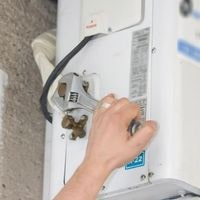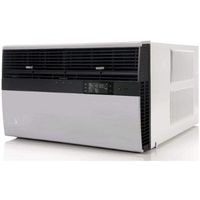Friedrich air conditioner troubleshooting. Friedrich Air conditioning units tend to suffer wear and tear just like anything else.
In order to avoid having to pay for unexpected repair expenses, it’s important to keep an eye on your AC system and address problems as they arise so you can avoid costly long-term repercussions on your energy bills and make sure the air conditioner continues operating properly for years to come.
Friedrich air conditioner troubleshooting
Here we will discuss some common issues and solutions for Friedrich air conditioner troubleshooting.
Compressor won’t Operate
If you have determined that all of the components surrounding the temperature control board, such as the compressor overload, capacitor, and AC compressor, are working, then it is possible that the control board itself is faulty.
Before replacing the temperature control board, make sure to check these parts first.
The temperature control thermostat, which has electrical contacts inside that burn out over time on a regular basis, can fail in such a way as to turn on the fan motor.
But not the compressor motor (often when the outside air is warmer than the setpoint inside), leading to unnecessarily high energy consumption.
AC Makes loud Noise
The fan motor or dual shaft fan motor usually has some type of bearing. In general, these bearings can be lubricated for the life of the product.
However, there is a chance that lubrication will break down over years of use, resulting in noise and therefore reduced performance of the unit.
When these cases arise, it’s necessary to replace the dual shaft fan motor in order for it to work properly.
Typically, there is a front-facing fan and a rear-facing fan on an air conditioner. These fans are very important to the air conditioning system because they ensure proper cooling of the outdoor coil.
If one or both of these fans become damaged, worn out, or broken, it can completely ruin your air conditioning unit’s functionality.
AC Not Turning Off
As the refrigerant passes through the condenser coils, the heat is dissipated. If the coil is dirty, it cannot dissipate the heat overload as effectively, causing your AC to work harder than usual.
A dirty filter may lead to excessive amounts of dust accumulation on these pipes leading to overheating and excess strain on your air conditioner.
Check if these are getting clogged and clean them when needed to avoid overheating that might make you need a repair in a short span of time.
The thermostat is responsible for monitoring temperature. When in use, if the air temperature rises above a set point, the thermostat will activate an automatic switch (based on how it’s been programmed).
The automatic switch then provides power to the compressor and fan located inside your AC unit.
Remote Control Fault
Start by replacing the remote control’s batteries. The remote control might be defective if you can still operate the air conditioner manually after installing fresh batteries.
If you think the remote is broken, go out and find a replacement for it.
Infrared signals are received by the main control board via an infrared receiver. It will not be possible for the remote control to communicate with the control board if the infrared receiver is not working.
This can be caused by many factors, including but not limited to loose wires within the motherboard itself, a malfunctioning power switch, or a lack of batteries within the remote control device.
Not Cooling Properly
If the air filter is clogged, it restricts the flow of cool air through the unit, thus reducing its effectiveness.
The evaporator coils may even ice over if the clogged filter can no longer absorb moisture from the air. You should clean your air filter regularly or replace it if necessary to prevent this.
There may be a problem with the compressor. Usually, this does not happen.
Check more commonly defective components-particularly the overload protector and compressor capacitor-before replacing the compressor. In the event of a defective compressor, only licensed technicians should replace it.
Fan Operation Failure
In order to fix the trouble with airflow caused by a faulty fan motor, you’ll need to replace the dual shaft fan motor.
This type of compressor is used only in evaporative coolers, and the dual-shaft fan motor features two blades, one on either side of the spine.
It is usual for them to have a defined lifespan depending on how often they are being used, but generally speaking, when their bearings have become too loose or don’t work at all, it’s time for a replacement so inspect yours as well!
If the fan blades don’t turn by hand, try turning them by hand. Wearing out motor bearings can result in the fan not turning freely.
It is important to replace the motor if it is worn out. You should test the incoming power to the fan motor if the fan turns freely.
If power is getting to the fan motor and it still won’t run properly, this also indicates that there is an issue with the current state of your motor, and it should be replaced.
Related Guides
